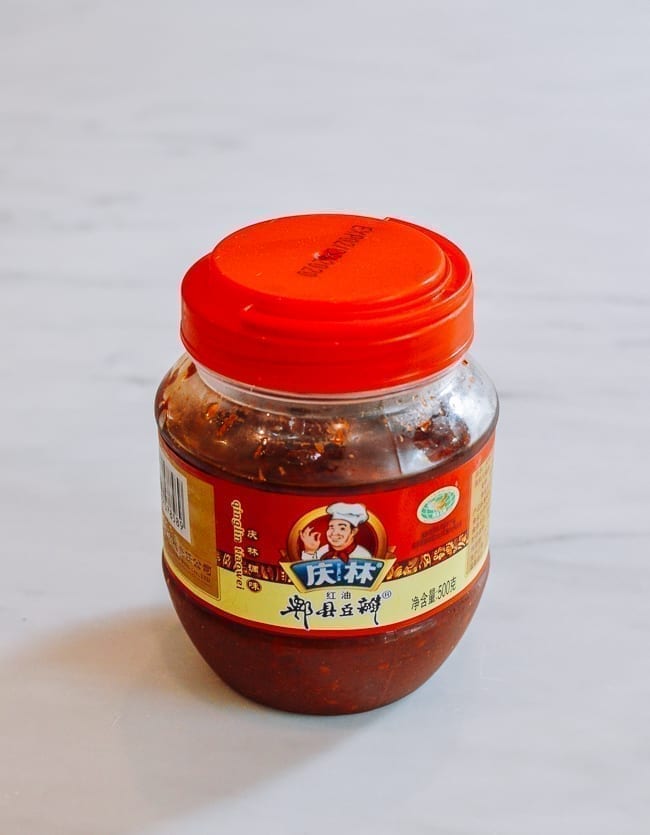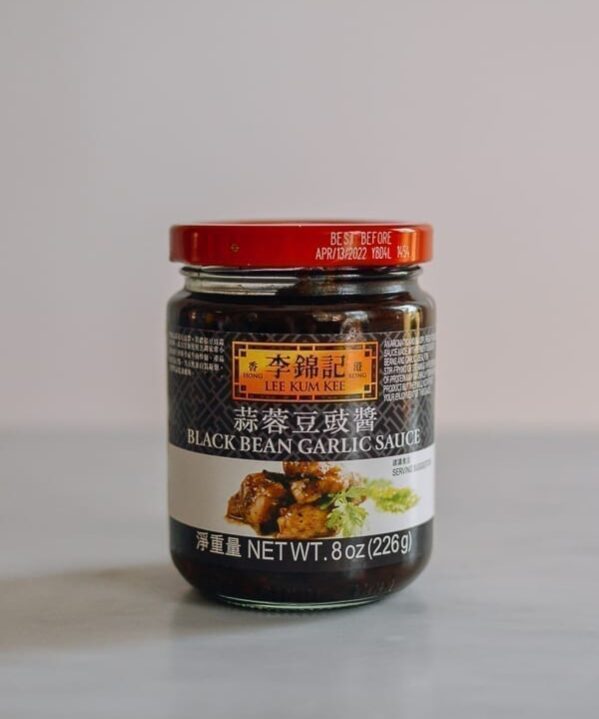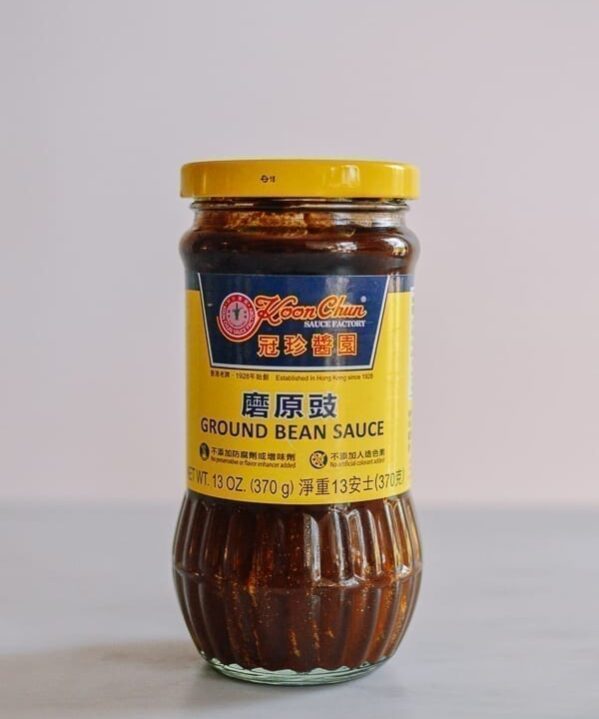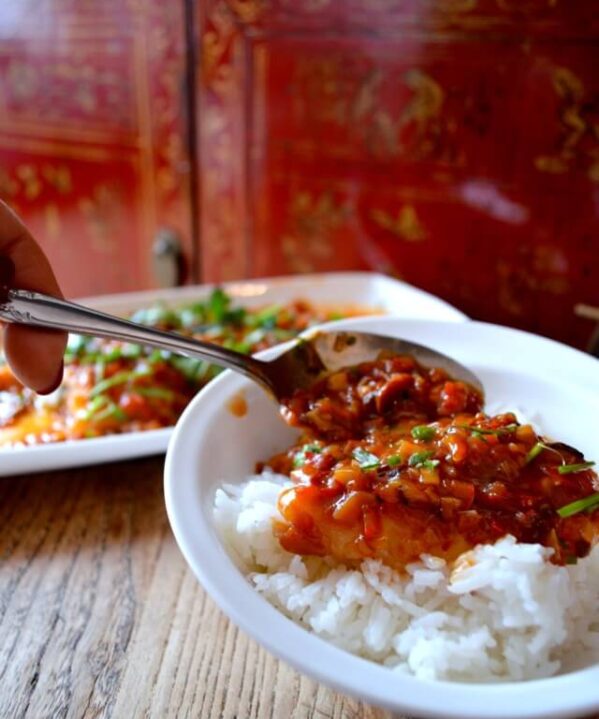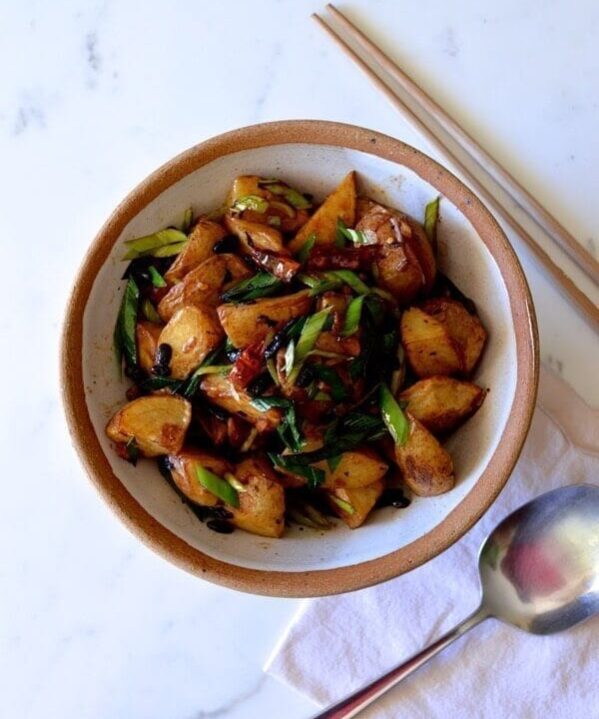There are many kinds of soybean pastes and sauces in Chinese cooking, but one of the types we tend to call for most often––especially in Sichuan (Szechuan) recipes––is spicy bean sauce, or la doubanjiang.
If you’re unfamiliar with this ingredient, we’ll tell you everything you need to know in this quick article.
What Is Doubanjiang?
La doubanjiang, or spicy bean sauce (là dòubàn jiàng, 辣豆瓣酱, sometimes spelled “tobanjiang”), is a paste made from fermented soybeans, broad beans, and chilies. You may also see it referred to as, “spicy bean paste,” “spicy broad bean paste,” or “broad bean chili sauce.”
The cuisine of Sichuan province, where spicy flavors dominate, makes ample use of this sauce. It is bright red or reddish-brown in color and has a relatively chunky texture (it’s not 100% smooth, like some bean sauces).
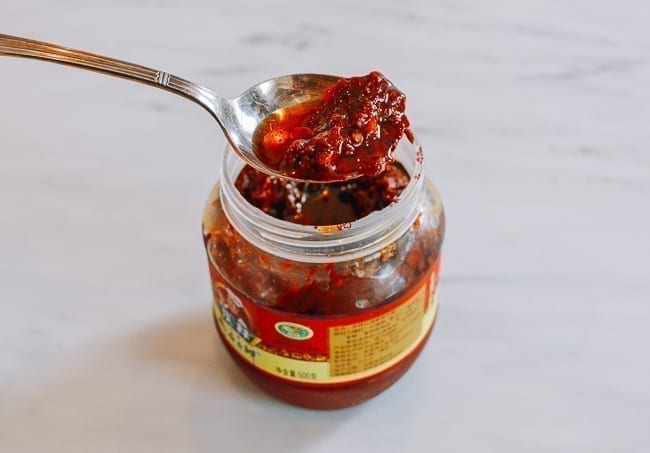
The flavor is savory (filled with umami from the fermentation process), spicy, and salty. Píxiàn dòubàn (郫縣豆瓣) is a particularly well-known type of spicy bean sauce, named after the town of Pixian in Sichuan province.
Note that you may see other products labeled “doubanjiang” that are actually sweet bean pastes. You can tell the difference easily, as the sweet/non-spicy version is a dark brown color, rather than red.
To make absolutely sure you’re getting the spicy version, look at the Chinese characters on the bottle. If you see just the characters, “豆板醤” (doubanjiang), you may be looking at a non-spicy bottle. However, if you see the character “辣” (la, meaning “spicy”), you have the spicy Sichuan version.
How Is Doubanjiang Used?
Spicy bean sauce is seriously tasty, and it’s the foundation of many great Chinese dishes (Mapo Tofu, anyone?). It is the king of Chinese sauces in Sichuan cooking and can be eaten as a condiment, or used as a seasoning or sauce base in cooking.
Often, that deep red color you see in Sichuan dishes comes from frying doubanjiang in oil. Once the sauce hits the oil, it immediately begins to turn red!
Note that doubanjiang is quite salty, so you’ll have to keep that in mind when seasoning the dish and adding other salty ingredients, like soy sauce.
In addition to Mapo Tofu, classic Sichuan dishes that use spicy bean sauce include Twice Cooked Pork and Spicy Numbing Dry Pot (Mala Xiangguo).
Buying & Storing
Look for the Chinese characters, 辣豆瓣酱 or “la douban jiang.” You may also see it labeled with some combination of the words, “broad bean paste with chili.”
As always, it’s best to look at the Chinese characters on the label, as English translations can vary widely on ingredients imported from China. You’ll find it in plastic packets:
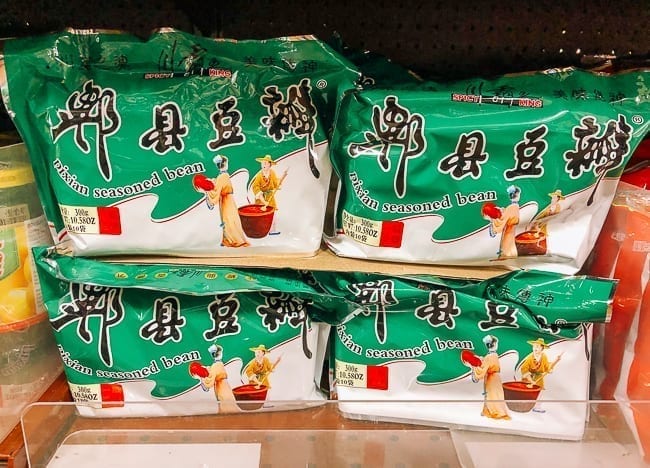
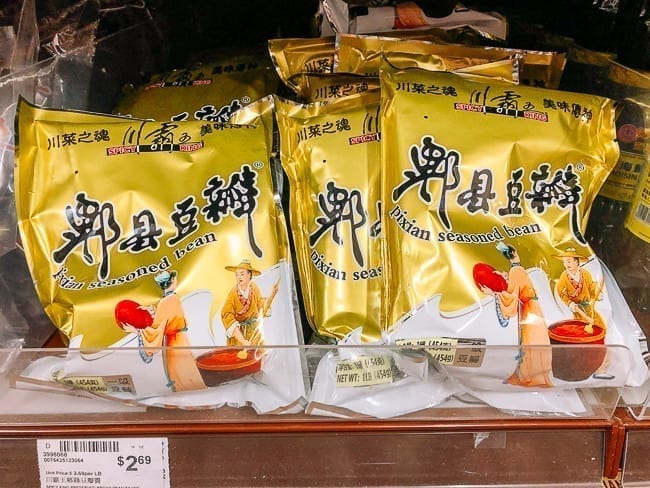
…as well as resealable jars.
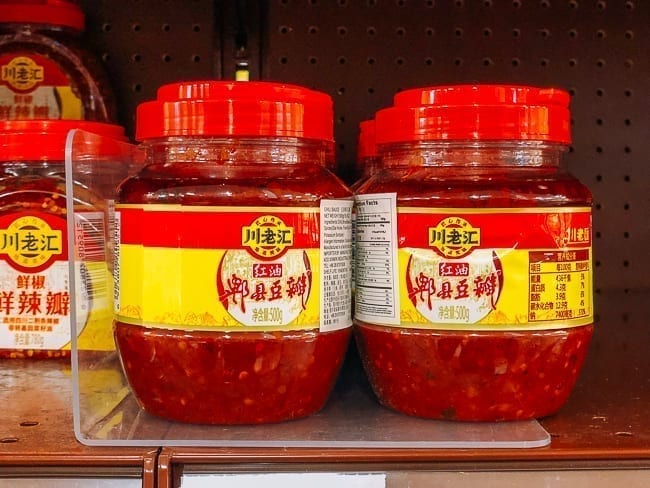
When looking for this particular sauce, avoid brands that are more recognizable in America, like Lee Kum Kee (They make this Lee Kum Kee Chili Bean Sauce- Toban Djan). Spicy bean sauce is not their specialty or forte (they make Cantonese type sauces and ingredients primarily).
Look for a Pixian Spicy Bean Sauce, pictured below.
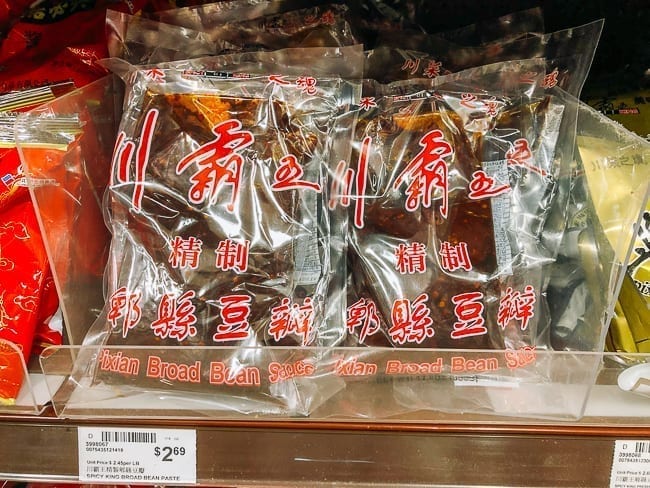
You may see prices differ depending on the fermentation time. The longer the fermentation, the more expensive it can be. A 3-year fermented la doubanjiang will have more depth of flavor than one that has been fermented for 3-6 months.
The Mala Market is a great resource for authentic, premium Sichuan (and other Chinese) ingredients. They offer a Pixian Doubanjiang sourced and packaged for them in Sichuan, as well as a super premium 3-year aged Pixian Doubanjiang.
Refrigerate spicy bean sauce after opening. If you purchased it in a resealable jar, it’s easy to store. If you purchased it in a plastic packet, transfer any leftover sauce from the packet to a clean jar using clean utensils. Always use clean utensils when handling/measuring out the sauce for recipes. This will extend its shelf life and prevent mold from forming.
It can last in a sealed container in the refrigerator for months, as long as you always use clean utensils to minimize the potential for external contamination. In general, it’s best to use the sauce by the date on the packaging.
Substitutions for Spicy Bean Sauce
If you can’t find spicy bean sauce, or you’re looking for a substitution in a pinch with ingredients you may already have, you can mix chili oil or chili paste with regular bean paste to make a spicy version.
Our Favorite Recipes Using This Ingredient
- Mapo Tofu
- Steamed Fish with Spicy Bean Sauce (Douban Yu)
- Spicy Beef Noodle Soup
- Ma La Xiang Guo (Spicy Numbing Stir-fry Pot)
- Eggplant with Garlic Sauce
- Spicy Cold Tofu
- Ants Climbing a Tree
- Shanghai Hot Sauce Noodles (Lajiang Mian)
- Taiwanese Beef Noodle Soup
- Hunan Spicy Pork & Tofu
- Twice Cooked Pork
If you have further questions about this ingredient integral to Sichuan cooking, let us know in the comments. What are your favorite Sichuan dishes?
Quick La Doubanjiang Substitution
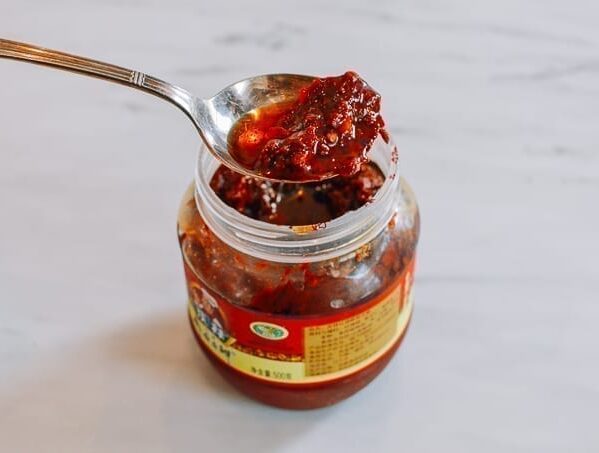
Ingredients
- 1 part bean paste (regular sweet bean paste, hoisin sauce, or ground bean sauce)
- 1 part chili oil (or chili sauce)
Instructions
- Combine the bean paste and chili oil thoroughly until emulsified together; it is ready to use.
